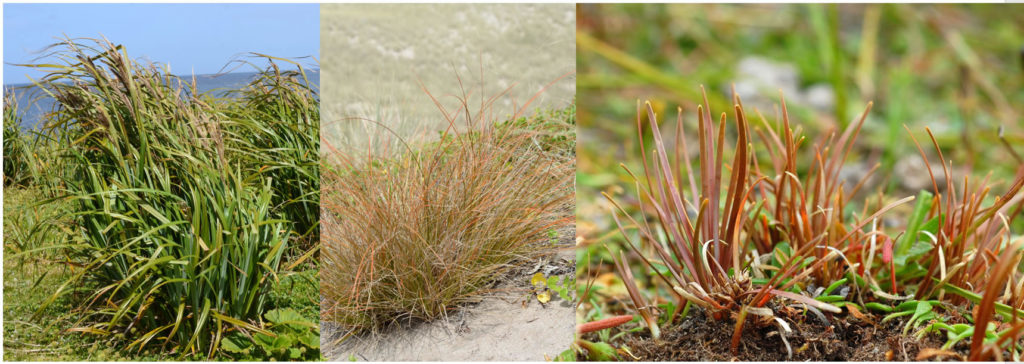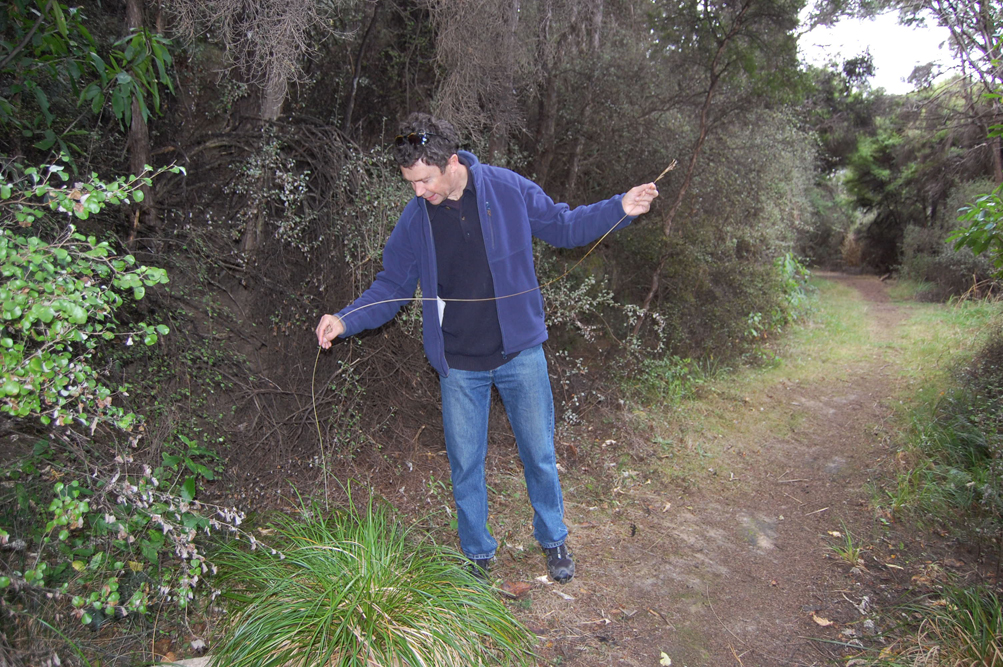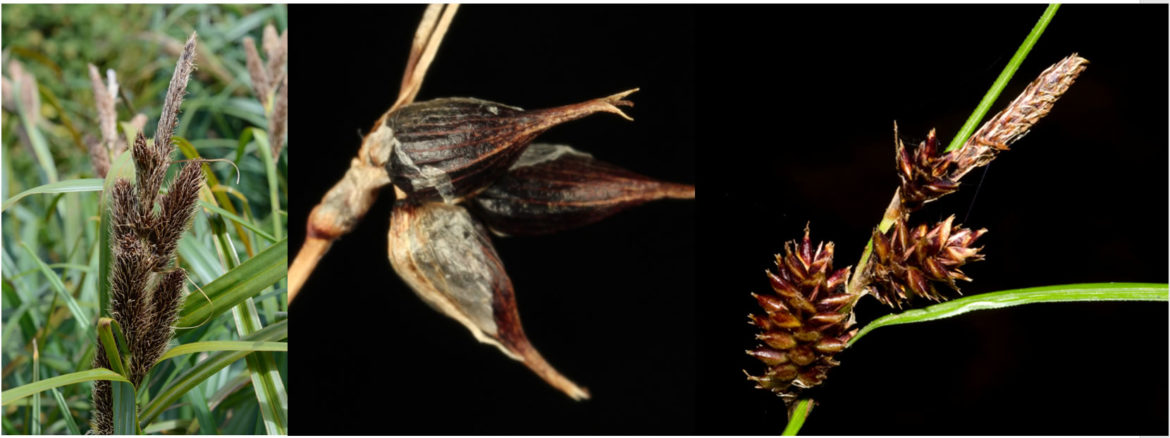New Zealand is a hotspot for Carex (a type of sedge) with 116 species. This is not far short of our biggest plant group, the hebes (Veronica), with 125 species. The ancestor of all hebes arrived in New Zealand, and just like Darwin’s finches in the Galápagos Islands, evolved in form to fill many different habitats from the sea to the mountain tops – classic island evolutionary radiation.
So, has Carex done the same thing? The answer is well, kind of no? The diversity of New Zealand’s is the result of at least 10 separate arrivals over the millennia. But the answer is also, yes, because two of those arrivals account for 70% of species we have today.
Species of both these two groups we often come across but may only notice vaguely as grassy or sedgy things while walking in our forests and tussock-grasslands, although one of them hook-sedges often attaches its seeds to our socks and Velcro. The other one, toothed-beak sedges, although nearly everywhere in our remnant natural areas is perhaps more easily thought of by example of their use in landscaping for their striking orange or red leaves, such as Carex testacea and C. comans.
This latter group of Carex, of about 50 species, is mostly unrecognised as a coherent group but, is also an example of classic island radiation that has adapted to many habitats. It is found coastal to alpine and from the Kermadec Islands to the sub-Antarctic islands of Campbell and Auckland. There have also been dispersal and colonisation from New Zealand to Australia and to Robinson Crusoe Island and mainland Chile. Species are found in glacial moraine landscapes, lake margin turfs, short and tall tussock grasslands, herbfield and high alpine fellfield, karst areas and cliffs, salt marshes, forest species and even in sand dunes. They seem to have speciated greatly on basic (alkaline calcareous soils) and ultramafic soils (rich in magnesium, nickel, chromium and cobalt, minerals that are toxic to many species).


The relationship of this radiation and where it fits in the world was recently worked out by a group of Spanish botanists. Using DNA and phylogenetic analyses they discovered the evolutionary link between the New Zealand lineage and another in the mountains of southern Europe and northern African. From their evolutionary framework it is almost certain that some of the unusual characteristics found in New Zealand have evolved elsewhere in the world as they are common to both lineages whereas others have likely evolved within New Zealand.
Which ones are which? The ecological preference for basic and ultra-mafic appears in both lineages and many species are found on these soil types. Another feature in common is the darkly pigmented urticles (a sort of sac) that surround the nut, and which is otherwise absent from the rest of Carex. On the other hand it seems that characters such as the presence of no stem versus a very long stem, red/orange leaves, and a very grass-like tussock habit appear to be uniquely New Zealand as they do not appear in related species outside of New Zealand but, they do appear in other unrelated Carex within New Zealand suggesting strong selection for these traits.

In a collaboration with our Spanish colleagues we are studying the evolution of both the New Zealand Carex radiations and comparing them with their related lineages in Southern Europe, North Africa and South America. We hope to date the sequence of events of dispersal and colonisation and to gain insight into rates of speciation, species diversity and climatic context. Locally we are starting a project studying speciation patterns in the toothed-beak sedges on the marble ranges of North West Nelson where there is interesting and uncategorised diversity. Speciation appears to have occurred across a wide altitudinal range and there is much varying and conflicting morphology suggesting very recent speciation on to these habitat rich mountains of solid marble reaching up to 1800 m at Mt Arthur and Mt Owen.

